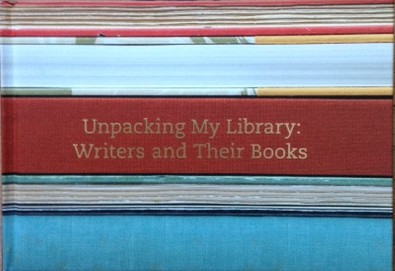Inspiring Older Readers
 posted on 08 Nov 2017
posted on 08 Nov 2017
Unpacking My Library: Writers and Their Books edited by Leah Price
I have a confession to make. I’m the kind of person who gets invited to your house and spends way too much time looking at your bookshelves and, I admit, trying to make assessments of your personality based on what’s there. I’ll even try working out what’s on bookshelves behind people being interviewed on television. Maybe this is why I don’t get invited to many places?
But some vicarious pleasure is now available because this book seems to have been especially created for people like me. It lets me browse other people’s shelves without leaving the comfort of my own sofa – what can be better? And these aren’t the shelves of just anybody because the editor and interviewer, Leah Price has persuaded some top writers to let her and a camera into their houses especially to snoop on their bookshelves and ask them some questions about their collections.

The fact that this is originally an American publication means that it’s largely US authors who are featured – although Philip Pullman is here – but that doesn’t really matter. What’s fascinating isn’t just that we get some candid shots of their bookshelves but that they are also pressed to select a group of their particular favourites – not those that are necessarily rare or expensive but the ones that they treasure most.

Price doesn’t ask each author exactly the same questions but responds to what she is seeing on the shelves. There are some common themes that she tries to tease out of all of them – why did they select their top ten; how did they first get into books; what sort of decisions are involved in how the shelves are organised. However each visit and each interview is quite different in tone and content and this is something I very much liked because it prevented the book becoming too formulaic.

The book is designed and produced in a landscape format that resembles a letterbox shape and this allows the longer bookshelves to be represented in detail without losing perspective. Leafing through the picture pages is pleasant enough but I don’t think this is primarily a picture book because you’ll want to read the interviews because that’s where the substance is.
There are ten writers and their book collections that are featured and I especially liked Gary Shteyngart and his observation that:
I’m so old-fashioned that I still like to read bound, printed media artefacts like books. You read, then you write, then you read some more, then more writing, and so on in an endless wordy loop.
I’ve lost track of the amount of times I’ve said something very similar to the students I teach!

Alison Bechdel’s interview brought a smile of recognition to me face when she tells Price:
I can’t bear losing a volume, though, and I keep track of what goes out. In my senior year of college I let a friend borrow my Symbolic Logic textbook. We fell out of touch and for twenty years I missed that book almost every day.
I’m absolutely hopeless when it comes to lending out books (and so is my wife) but we’re also terrible at keeping track of who has had what – not being able to track a book down again upsets me at some elemental level.

I could go on picking and quoting bits from interviews with Junot Diaz, Edmund White or Jonathan Letham but the sensible thing would be for you to go and get a copy for yourself.
It’ll cost you a little over £10 and you’ll also find there are companion volumes looking at the bookshelves of artists and one for architects too. Treat yourself and have a binge!
Terry Potter
November 2017